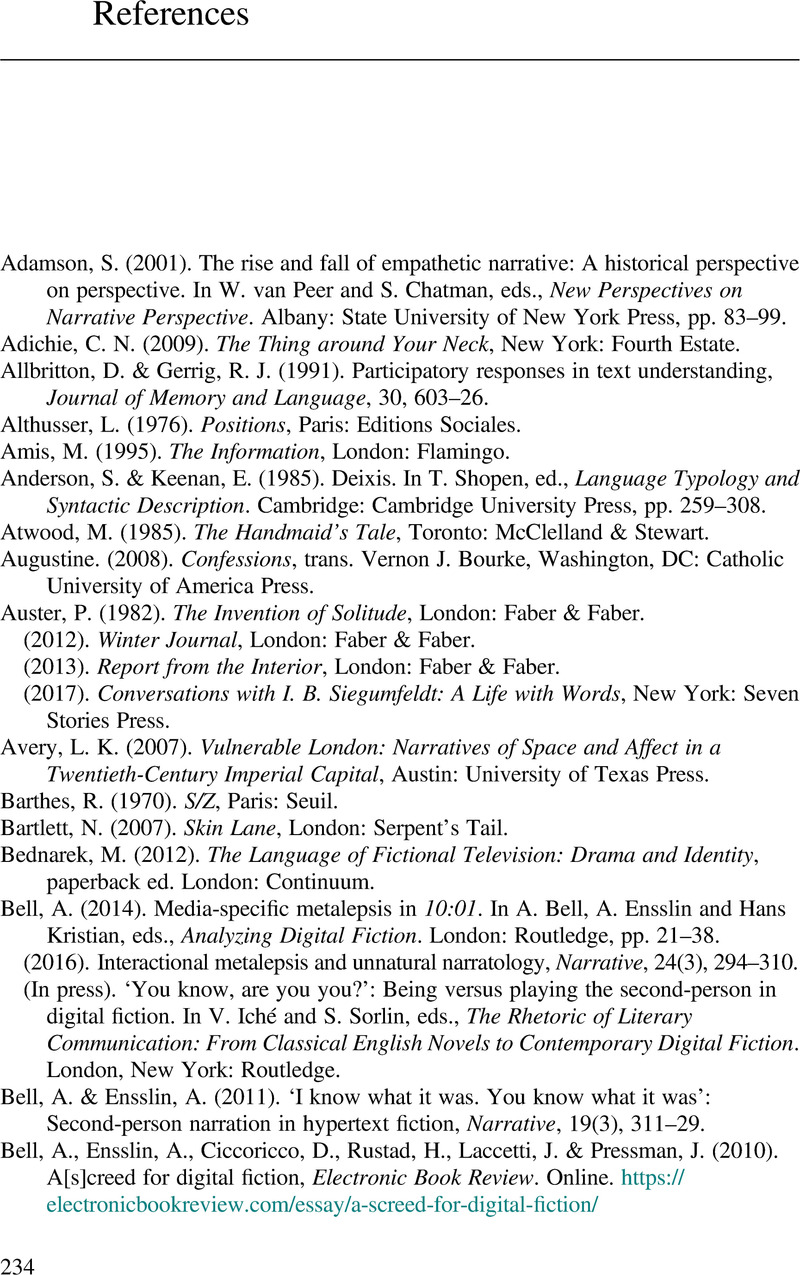Book contents
- The Stylistics of ‘You’
- The Stylistics of ‘You’
- Copyright page
- Contents
- Figures and Table
- Preface
- Acknowledgements
- 1 Theorising the ‘You Effects’
- PART I Singularising and Sharing
- PART II The Role of ‘You’ in the Writing of Traumatic Events
- Part III The Author–Reader Channel across Time, Gender, Sex and Race
- PART IV New Ways of Implicating Through the Digital Medium?
- References
- Index
- References
References
Published online by Cambridge University Press: 06 January 2022
- The Stylistics of ‘You’
- The Stylistics of ‘You’
- Copyright page
- Contents
- Figures and Table
- Preface
- Acknowledgements
- 1 Theorising the ‘You Effects’
- PART I Singularising and Sharing
- PART II The Role of ‘You’ in the Writing of Traumatic Events
- Part III The Author–Reader Channel across Time, Gender, Sex and Race
- PART IV New Ways of Implicating Through the Digital Medium?
- References
- Index
- References
Summary

- Type
- Chapter
- Information
- The Stylistics of ‘You'Second-Person Pronoun and its Pragmatic Effects, pp. 234 - 250Publisher: Cambridge University PressPrint publication year: 2022



